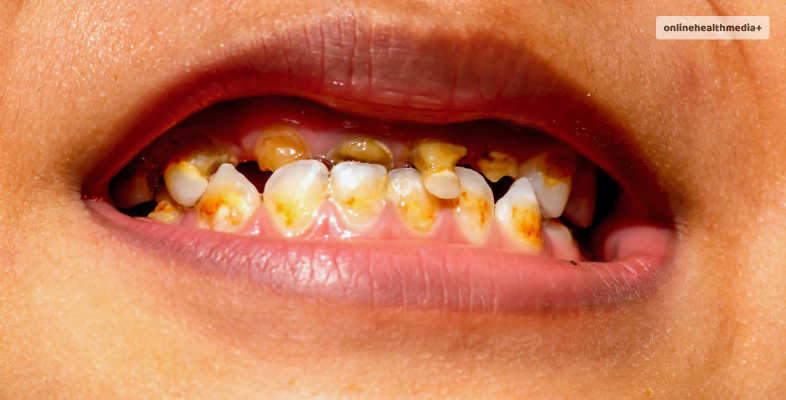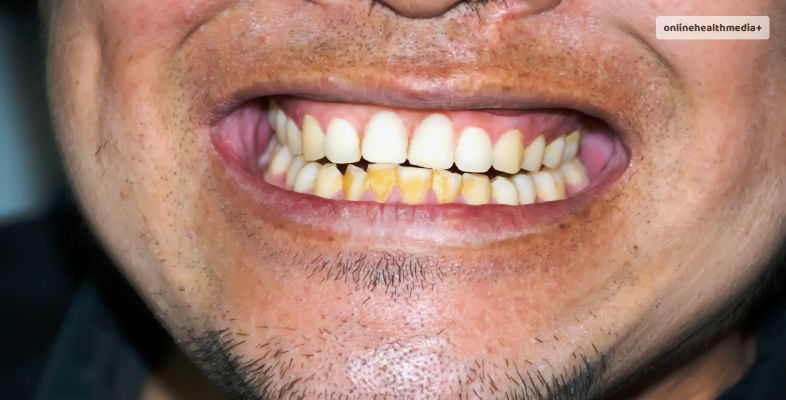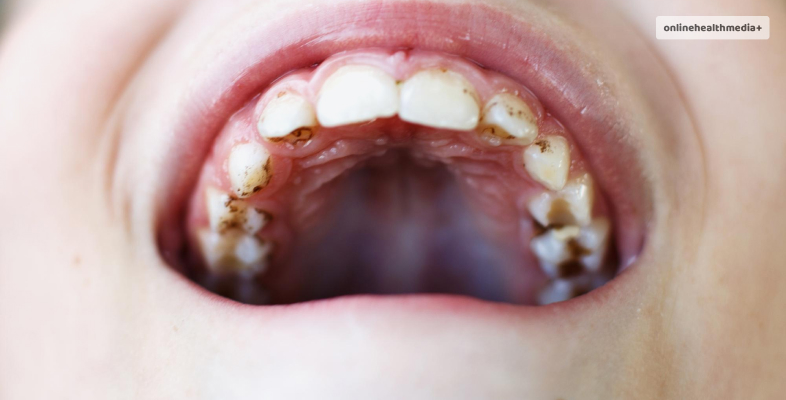Calculus Bridge: Not A Bridge That Helps Cross Rivers.
Calculus bridge is a name given to the dental calculus that can occur across multiple teeth. This development of plaque can be so severe that it overgrows and causes tartar across different teeth.
This can then lead to different issues that can become major dental problems.
No, it isn’t a bridge that forms by solving a calculus equation or some sort of interconnection that helps get you from one place to another.
The following article dives into the dental issue, possible causes, and treatment options to help you eliminate overgrowth.
What is a calculus bridge?

Something as simple as a dental plaque, which gets ignored most of the time, can become severe and cause a calculus bridge.
The condition can become severe enough to become a darker, thicker substance on the teeth. Some cases can develop along the gumline.
Moreover, excess amounts of calculus in the mouth can lead to other issues such as tooth decay, gum disease, halitosis, and bad breath.
The presence of the calculus bridge can make you feel self-conscious as you may feel it looks “unsightly.” The stigma surrounding the calculus bridge can lead you to feel conscious about it.
However, you can control its spread with proper medical checkups and daily oral hygiene. Moreover, it will be helpful to go for regular checkups to prevent it from coming back.
How is it caused?

The presence of plaque can lead to the formation of a calculus bridge. When plaque is not controlled and allowed to spread, it can progress to the formation of a calculus bridge.
The removal of plaque is necessary to prevent the formation of a calculus bridge. Moreover, this hardened plaque can contain bacteria, calcium, and organic matter in the mouth.
Tartar formation can only be removed with the help of dental procedures. This cannot be removed with the help of brushing or flossing. Poor dental hygiene is, however, one of the main causes of this condition.
What are the related issues?

The related issues that you may see develop with time if your treatment is delayed are as follows:
- Halitosis
Halitosis is a condition wherein the bad breath becomes chronic, and there is no possible reason that you can find.
The condition is worse than the common cases of morning or smelly breath after consuming something with a strong flavor.
Halitosis does not clear up by brushing your teeth or eating mints. The condition is a periodontal disease that usually receives the diagnosis of gum disease.
- Receding gums
When a calculus bridge leads to periodontal disease, it can cause receding gums, a major complication. The progression of the bacterial infection can be severe, such that it can destroy the connective tissue and lead to poor bone health, causing exposure of the teeth roots.
In addition, the condition can also result in gaps between the teeth and gums, which can be filled up by plaque formation and calculus buildup.
- Gum disease
One common side effect of calculus bridge is the buildup of gum disease. This is due to bacteria that take advantage of the poor oral condition and infect the gums.
The early stage of this disease is known as gingivitis; when there is primary inflammation of the tissue, there can be bleeding, redness, and swelling. Reversing early-stage gum disease requires proper cleaning and dental care.
- Tooth decay
When the bacteria in the mouth feed on the sugar in the mouth, it can emit acid as a byproduct. This leads to an acidic environment, which can cause severe consequences such as breaking down the enamel.
This can then lead to the formation of cavities or dental caries. The progression of this condition can cause severe pain, infection, sensitivity, and loss of teeth.
How do we get rid of the calculus bridge?

Getting rid of this condition will take patience from your end and the expertise of the dental practitioner. You can prevent the formation of calculus bridge with the help of the following steps:
1. Maintaining oral hygiene-
- When you maintain your oral hygiene, you are decreasing the chances of a dental problem. You must ensure you brush your teeth twice daily, for two minutes.
- You should also ensure you are not brushing harshly, as that will not decrease the plaque. However, it will worsen the situation and cause gum issues. Also, remember to replace your toothbrush every three months.
- Flossing daily between the teeth helps dislodge any food particles that may be stuck between the teeth. You may also opt for a water flosser if you are not comfortable with a pre-threaded flosser.
2. Regular checkups-
- Going for regular checkups ensures you are tracking your dental health.
- Moreover, this helps in maintaining the treatment process so that you can maintain it.
- If you have a condition such as periodontal disease, the dentist can keep a close eye on the condition.
- Regular checkups also let the dentist know if the treatment works on your condition. They can compare the appearance of the calculus.
3. Healthy habits-
- Smoking can impact dental health along with other physiological systems.
- Smoking smokeless tobacco can still affect your dental health. Thus, quitting this habit can help you prevent the development of a calculus bridge.
- Alcohol consumption can cause further damage to your gum health. This can facilitate the progression of the calculus bridge.
Removal of calculus bridge
The removal of the calculus bridge requires the intervention of a dental hygienist.
Here are the procedures that help in reducing the appearance of this buildup. The following procedures are good for this:
- The process follows a sequence where dental scaling is the first step to control the calculus. The next steps that follow this one are polishing and deep cleaning.
- Dental scaling is when dentists use special tools that help scrape off calculus deposits from the crowns of your teeth.
- Polishing is the next step that helps smoothen the surface. Dentists can clean and smooth the surface so that they can prevent the buildup of bacteria. It improves the therapeutic value of the treatment as well as helps in improving the appearance.
- Deep cleaning is also known as root planing or scaling. The dental professional facilitates the process by numbing the gums and then scraping away the tartar from below the gum line. They also remove the deposits at the tooth’s root, following it up by smoothing the area out. This helps in controlling the growth of bacteria, preventing their proliferation altogether.
These, followed by regular checkups, can help better control and prevent this condition’s recurrence.
Conclusion
Calculus Bridge is nothing like the Bridge to Terabithia- we’ve cleared that by now. This article aimed to improve your knowledge of the issue while also ensuring you can take care of the condition.
The condition can be due to the overgrowth of tartar across several teeth. In addition, as illustrated in the article above, other causes of the condition can exist.
Following the preventative steps can help you reduce the chances of the condition developing. While also ensuring that other related issues stay under check as well.
Have something else that helped you reduce the calculus bridge? Sound off in the comments below!
Also read
- A Harmonious Journey: Aging In Place With Private Home Care.
- A Unique Guide To Selecting The Perfect Charleston Dental Implant Virtuoso.
- Ozempic For Weight Loss: Deciphering The Enigma Of Effectiveness And Holistic Health.



